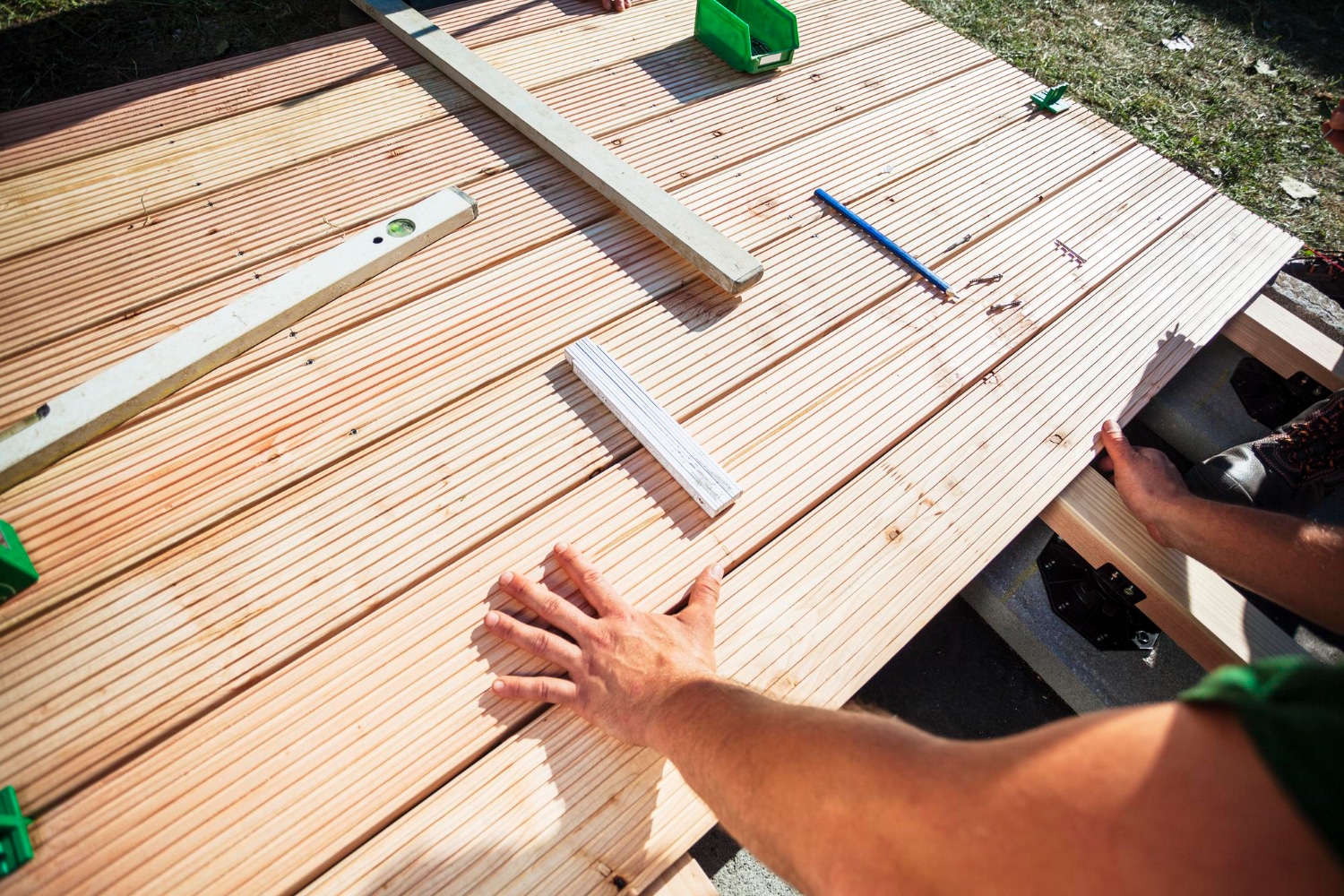Table of Contents
ToggleNot Everything Should Be Stuck Like Glue
Trex decking is a popular choice for many homeowners looking to build durable and stylish outdoor spaces. Known for its high-quality materials and robust construction, Trex decking provides a reliable alternative to traditional wood. It resists weathering, doesn’t rot, and is easy to maintain. But when it comes to installing Trex decking, you might wonder if using glue is an option. In this article, we’ll explore the difficulties of using glue with Trex decking, cover approved installation techniques, and offer tips for maintaining your deck to ensure it lasts for years.
Understanding Trex Decking Composition
Trex decking is made from a blend of recycled wood fibers and plastic. This composite material is created through a precise manufacturing process, where wood particles are combined with plastic resins. The mixture is then heated and formed into solid boards, ensuring each piece has a consistent look and feel. This process not only makes the boards strong but also environmentally friendly, as it repurposes materials that would otherwise go to waste.
The surface of Trex decking is coated with a protective shell that guards against stains, scratches, and fading. This cap layer ensures that the decking maintains its color and appearance over time, even under harsh weather conditions. The core of the boards remains strong and resistant to moisture, preventing issues like rot and decay that often plague traditional wooden decks.
Unique Features and Benefits
One of the standout benefits of Trex decking is its low maintenance requirements. Unlike wood, Trex doesn’t need annual staining or sealing, saving you both time and money. The boards are also splinter-free, making them safer for barefoot walking and ideal for homes with children or pets.
Trex decking is also known for its durability. It can withstand heavy foot traffic, extreme temperatures, and moisture without warping or cracking. This makes it perfect for various climates and ensures a long lifespan for your deck. Additionally, Trex offers a variety of colors and finishes, allowing you to choose the perfect look that complements your outdoor space.
Challenges of Using Glue with Trex Decking
1. Adhesion Issues and Material Compatibility
Gluing Trex decking presents several challenges due to its composite material. The mix of wood fibers and plastic creates a surface that typical adhesives struggle to bond with effectively. Many glues are formulated for either wood or plastic, not a combination of both, which can result in poor adhesion. The protective cap layer on Trex boards, designed to resist stains and moisture, can further complicate glue application.
Even if the glue appears to stick initially, it may not hold up under the stress of regular use. Weather changes, such as temperature fluctuations and humidity, can cause the adhesive to fail over time. This can lead to boards coming loose, creating safety hazards and requiring additional repairs.
2. Potential Problems and Risks
Relying on glue for Trex decking installation can lead to multiple issues. One major risk is the potential for delamination, where the boards separate from the adhesive layer. This can weaken the structure of your deck, making it unstable and unsafe. Moreover, using glue that is not approved for composite materials can void any manufacturer warranties, leaving you without support in case of product failure.
Another concern is the environmental impact. Many adhesives contain chemicals that can leach into the environment, especially under outdoor conditions. This is contrary to the eco-friendly principles behind Trex decking, which aims to be a sustainable and safe option for outdoor living.
Approved Installation Methods for Trex Decking
1. Mechanical Fastening Options
The best way to secure Trex decking is by using mechanical fasteners. There are several options available, including screws, hidden fasteners, and clips. These methods ensure that the boards remain firmly in place and maintain their structural integrity over time. Screws are commonly used because they provide a strong hold. Make sure to use composite deck screws, which are designed specifically for Trex boards to prevent any damage.
Hidden fasteners are another excellent choice. These clips attach to the sides of the decking boards, holding them securely without visible screws on the surface. This creates a clean, seamless look for your deck. Brands like Trex Hideaway offer hidden fastening systems that are easy to install and provide a secure fit.
2. Recommended Tools and Techniques
Using the right tools and techniques is crucial for a successful Trex decking installation. A power drill with a proper bit for composite screws is necessary for pre-drilling holes to prevent any splitting. For hidden fasteners, a specialized installation tool can make the process easier and faster.
When installing the boards, ensure there is adequate spacing between them. This allows for thermal expansion and contraction, which helps prevent warping. Follow the manufacturer’s guidelines for spacing and use a straight edge to keep your lines even.
Always wear safety gear, including gloves and goggles, to protect yourself during installation. These steps will help you achieve a professional-looking deck that lasts for many years.
Best Practices for Trex Decking Maintenance
Regular cleaning is vital to maintaining the appearance and longevity of your Trex deck. Start by sweeping the deck to remove loose dirt and debris. Use a soft-bristle brush and soapy water to scrub the surface gently. This method effectively removes grime without damaging the protective layer of the Trex boards.
For more stubborn stains, such as oil or grease, a composite deck cleaner can be very effective. Apply the cleaner according to the manufacturer’s instructions and rinse thoroughly with water. Using a pressure washer on a low setting can help remove any remaining dirt, but be cautious not to damage the decking.
Preventative Care for Longevity
Besides regular cleaning, several preventative measures can help your Trex deck last longer. Avoid dragging heavy furniture or planters across the surface, as this can cause scratches. Use furniture pads on the legs of chairs and tables to protect the decking from dents and scuffs.
In winter, clear snow and ice with a plastic shovel to avoid scraping the surface. If you need to use a de-icing product, opt for those safe for composite decking to prevent any chemical damage. Annual inspections can also identify potential issues, such as loose fasteners or minor damage, which can be addressed promptly.
Conclusion
Trex decking offers numerous benefits, including durability, low maintenance, and environmental friendliness. While gluing Trex decking is not recommended due to adhesion issues and potential risks, using mechanical fasteners provides a secure and lasting installation. Regular cleaning and preventative care can ensure your deck remains beautiful and functional for years to come.
For those who need expert guidance or professional installation, SpaceStars Custom Decks is here to help. Our team of deck builders specializes in creating custom outdoor living spaces that meet your needs and exceed your expectations. Contact us today to get started on your perfect deck!


